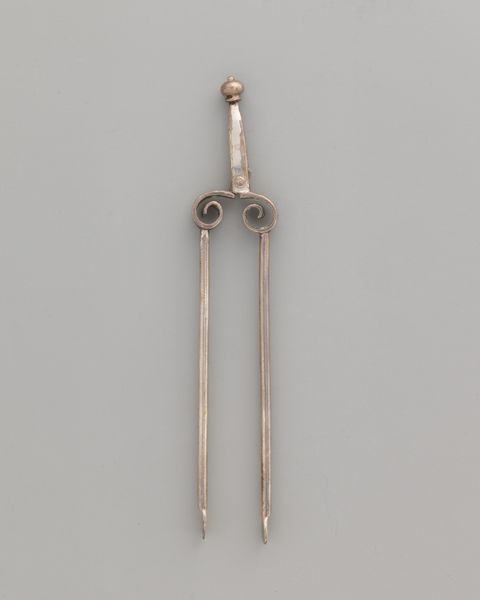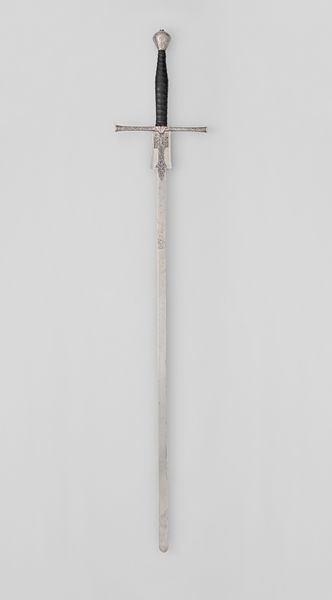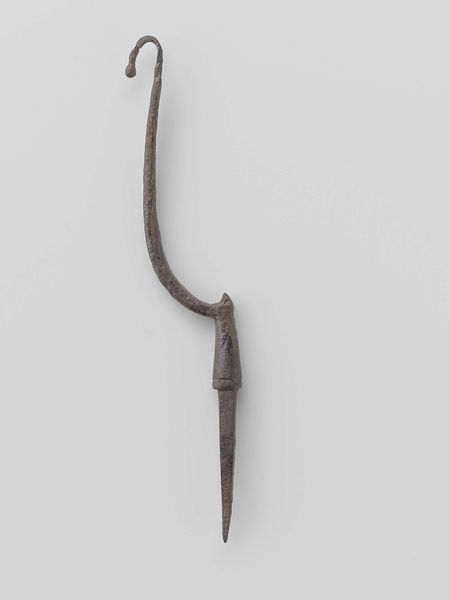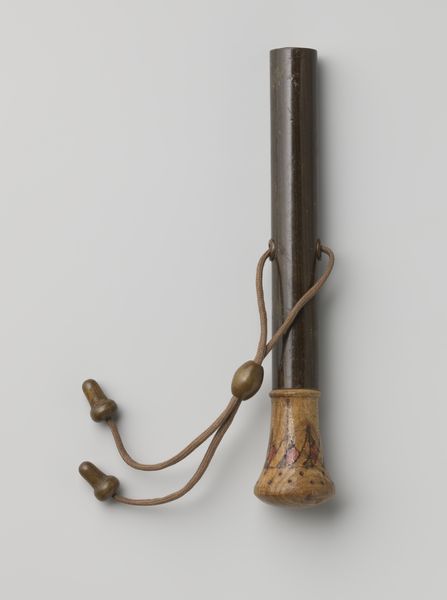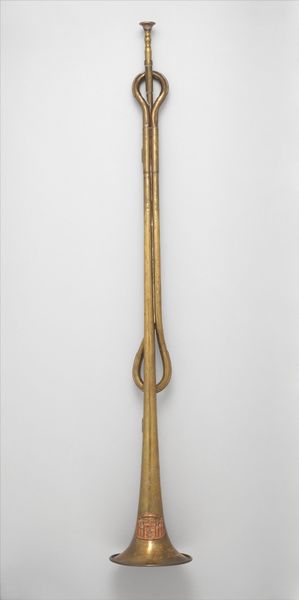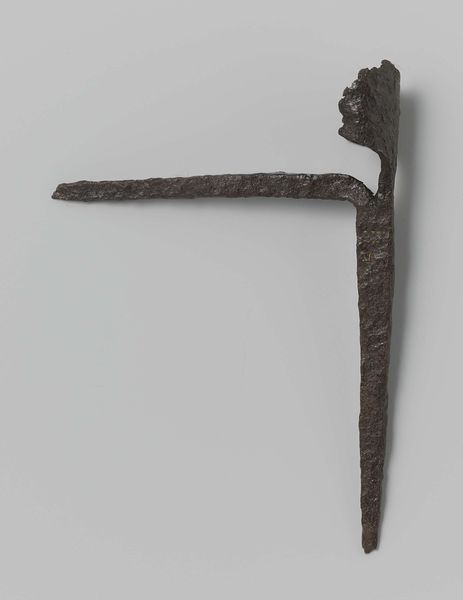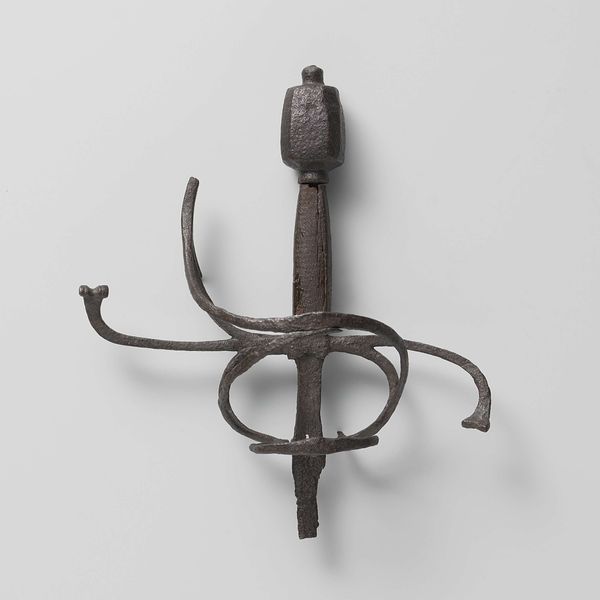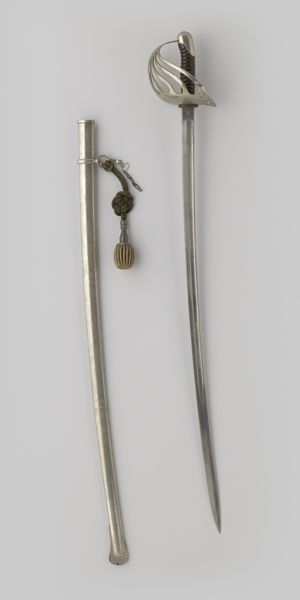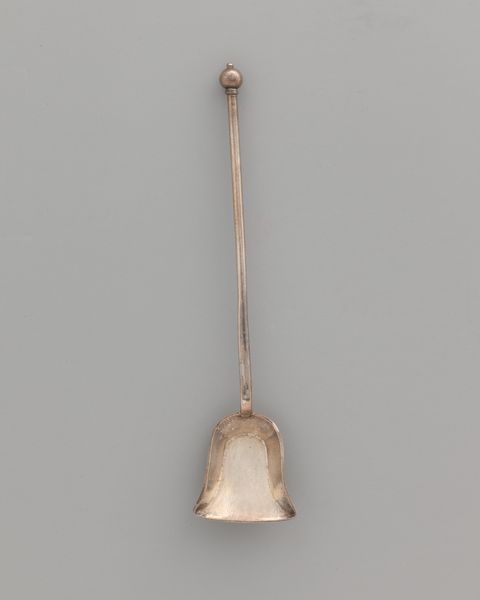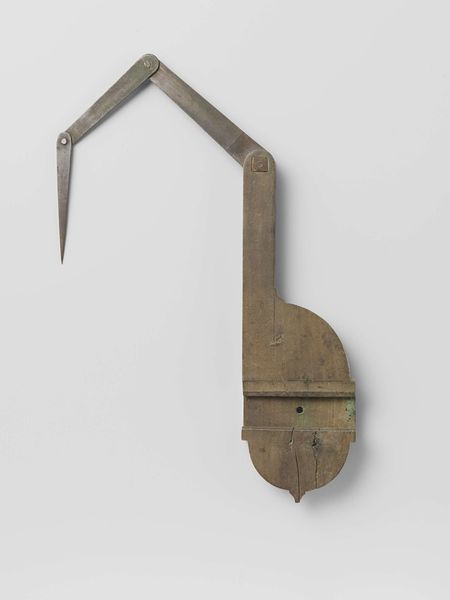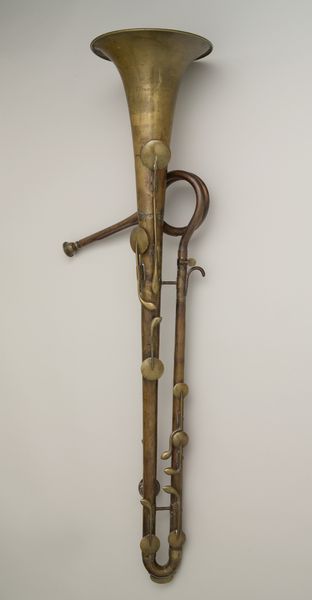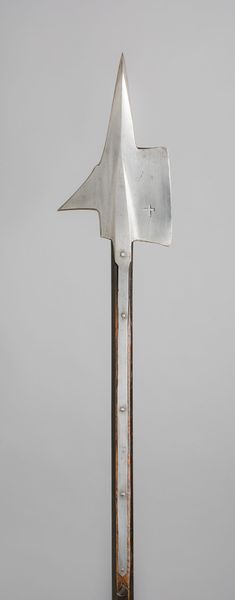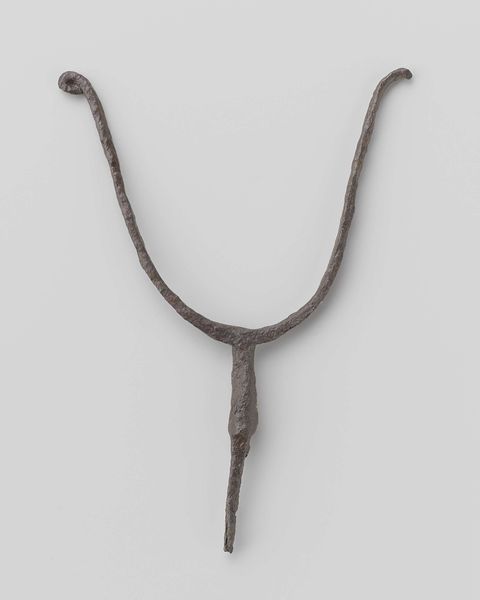
Reversspeld van een dubbeltje met het portret van Wilhelmina uitgezaagd c. 1940 - 1945
0:00
0:00
anonymous
Rijksmuseum
metal, sculpture
#
portrait
#
clear graphic shape
#
3d sculpting
#
circular oval feature
#
3d printed part
#
rounded shape
#
metal
#
plastic material rendering
#
virtual 3d design
#
round design
#
curved arc
#
3d shape
#
sculpture
#
miniature
Dimensions: height 7 cm, width 1.9 cm, depth 0.4 cm
Copyright: Rijks Museum: Open Domain
Editor: This diminutive artwork, housed here at the Rijksmuseum, is titled "Reversspeld van een dubbeltje met het portret van Wilhelmina uitgezaagd", or Lapel pin made from a dime with a portrait of Wilhelmina cut out, created anonymously sometime between 1940 and 1945. It's literally crafted from a coin, an act that somehow feels both practical and defiant. How does the material shape your understanding of its creation? Curator: Well, its materiality is everything. We're talking about the World War II period. Metal was scarce. To take a Dutch coin, a symbol of the occupied nation, and rework it... That's powerful. The act of carving Wilhelmina’s portrait out of a dime, likely using rudimentary tools, speaks to resourcefulness and quiet resistance. It transforms a mundane object of currency into a potent symbol. Editor: So the transformation itself is the message? Curator: Exactly. The labor involved, the repurposing of readily available material in a time of scarcity, becomes central. We often separate “high art” from “craft,” but this piece blurs that boundary. Consider the artisan’s skill, ingenuity, and perhaps even the clandestine nature of its creation. It embodies the intersection of necessity, symbolism, and material agency. What was circulating in public sphere and becoming a piece of craft to subvert. Editor: I never thought about it in that way, about the role of the circulation in society. Now I'm thinking about how it comments on value - both monetary and symbolic. Curator: Precisely! It challenges conventional notions of value and the role of objects in expressing identity during conflict. And also subverting consumption means, no? What this piece communicates, about Dutch resistance and also about people producing outside formal art economies is compelling, Editor: This has given me so much to consider in how to interpret this artwork. Thank you. Curator: My pleasure. Seeing art through a materialist lens truly brings the social and political context to life, doesn’t it?
Comments
No comments
Be the first to comment and join the conversation on the ultimate creative platform.
